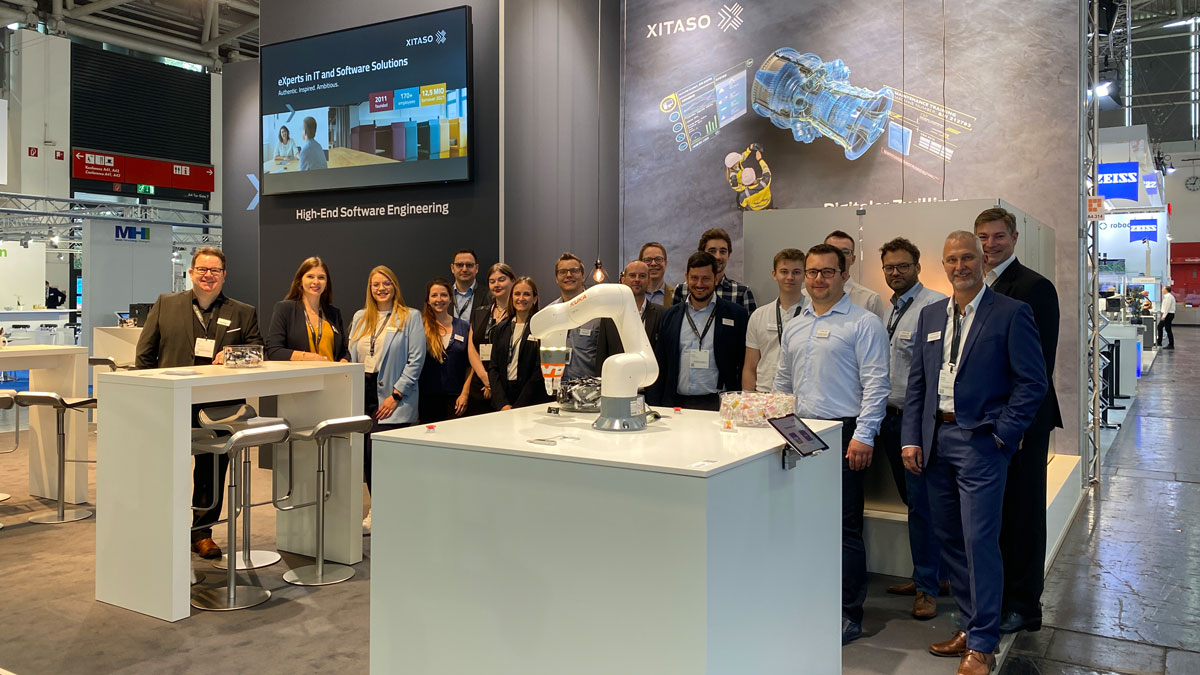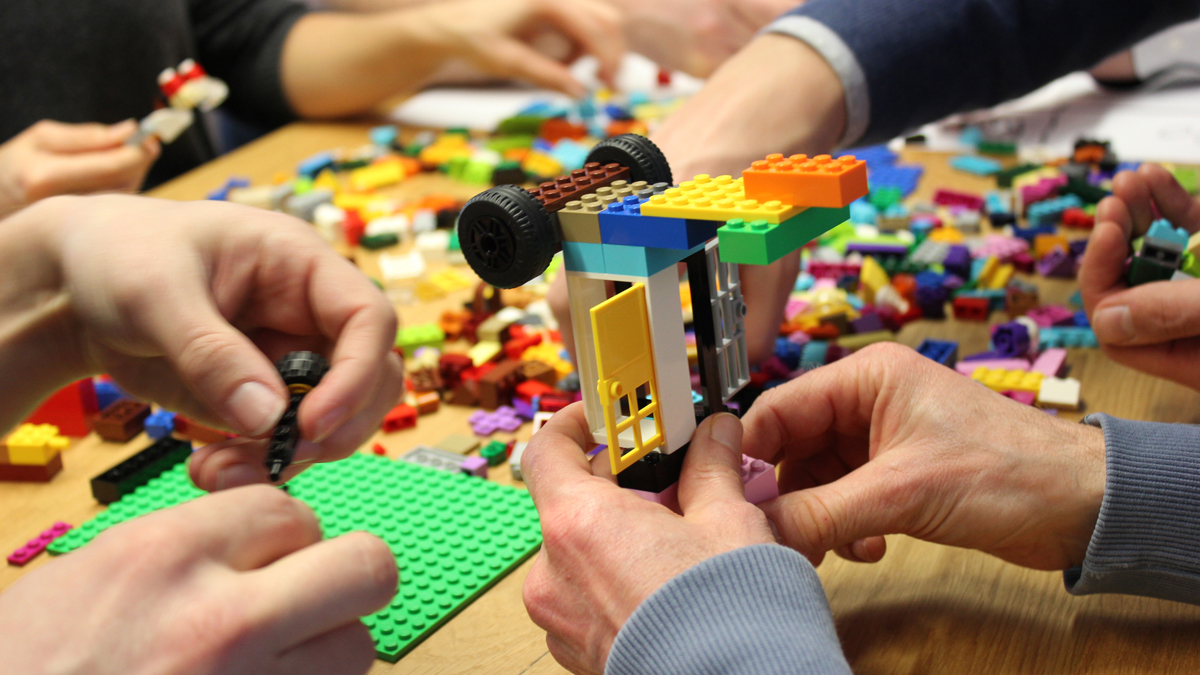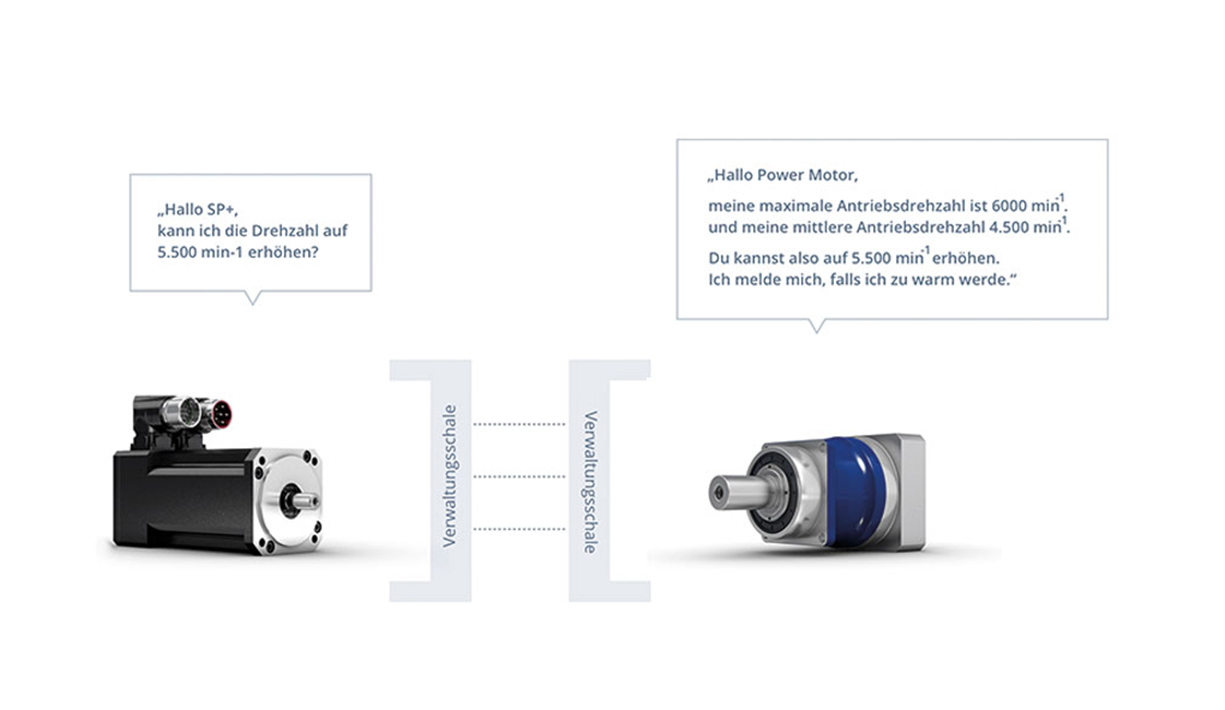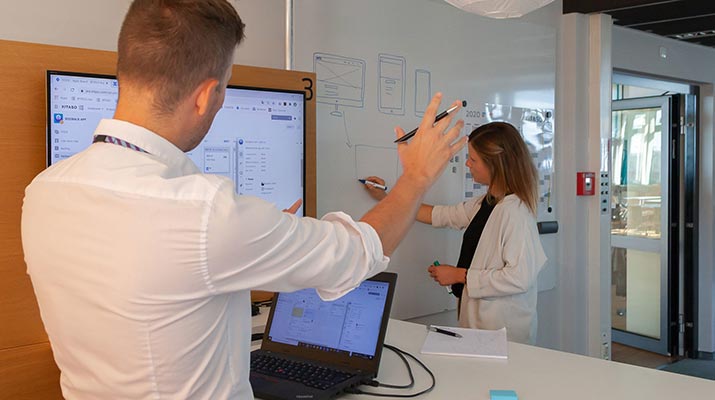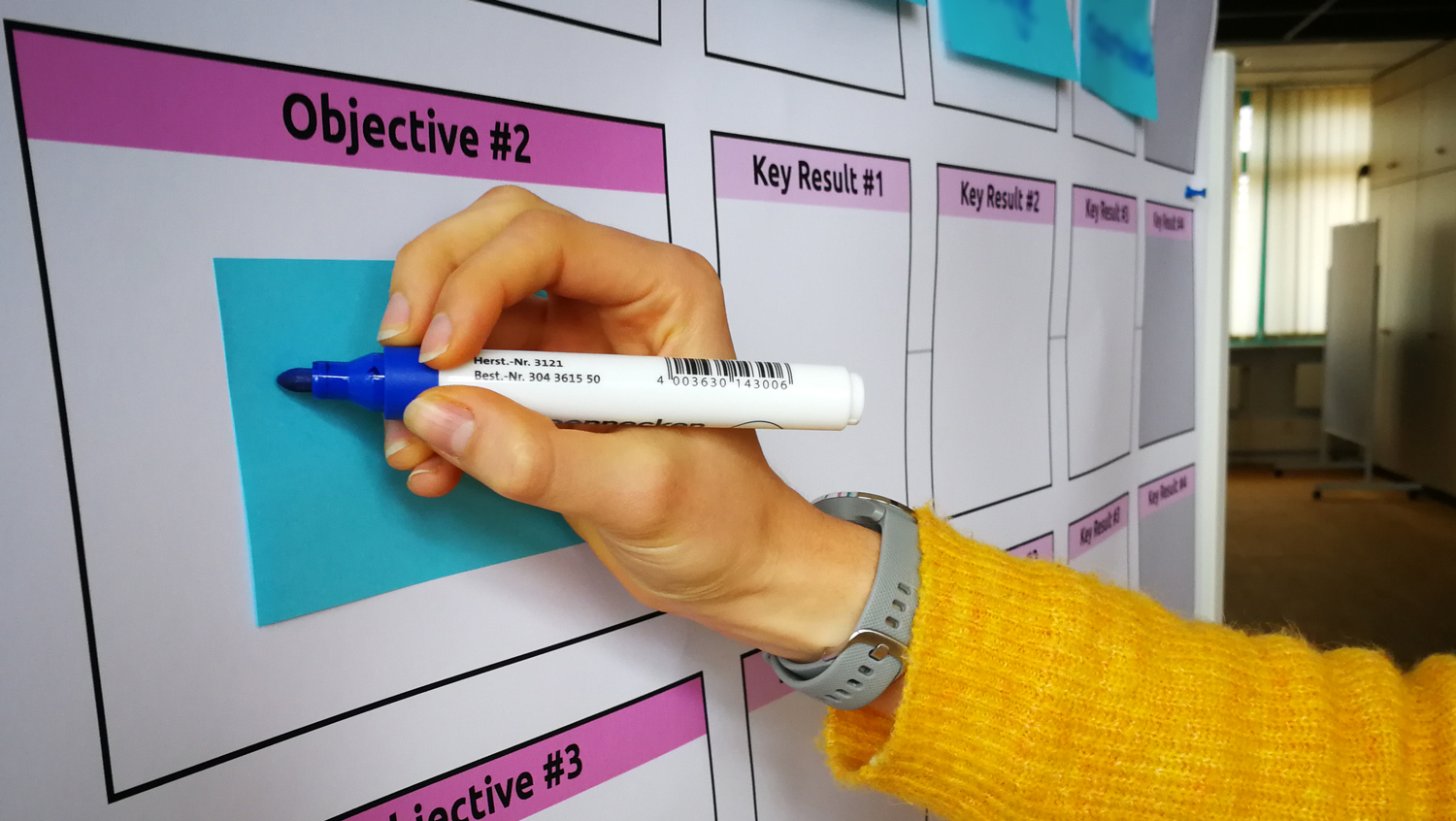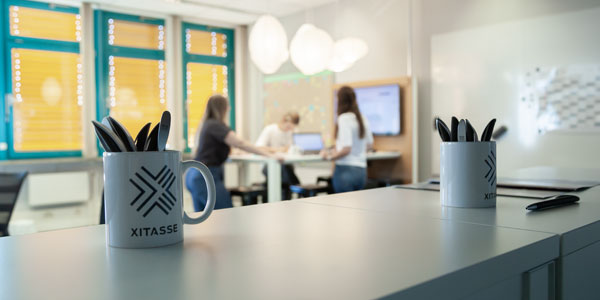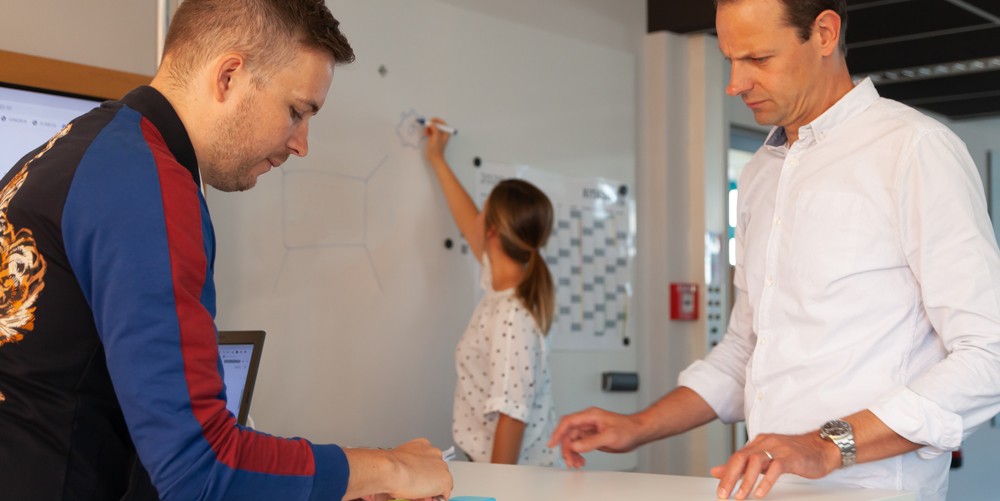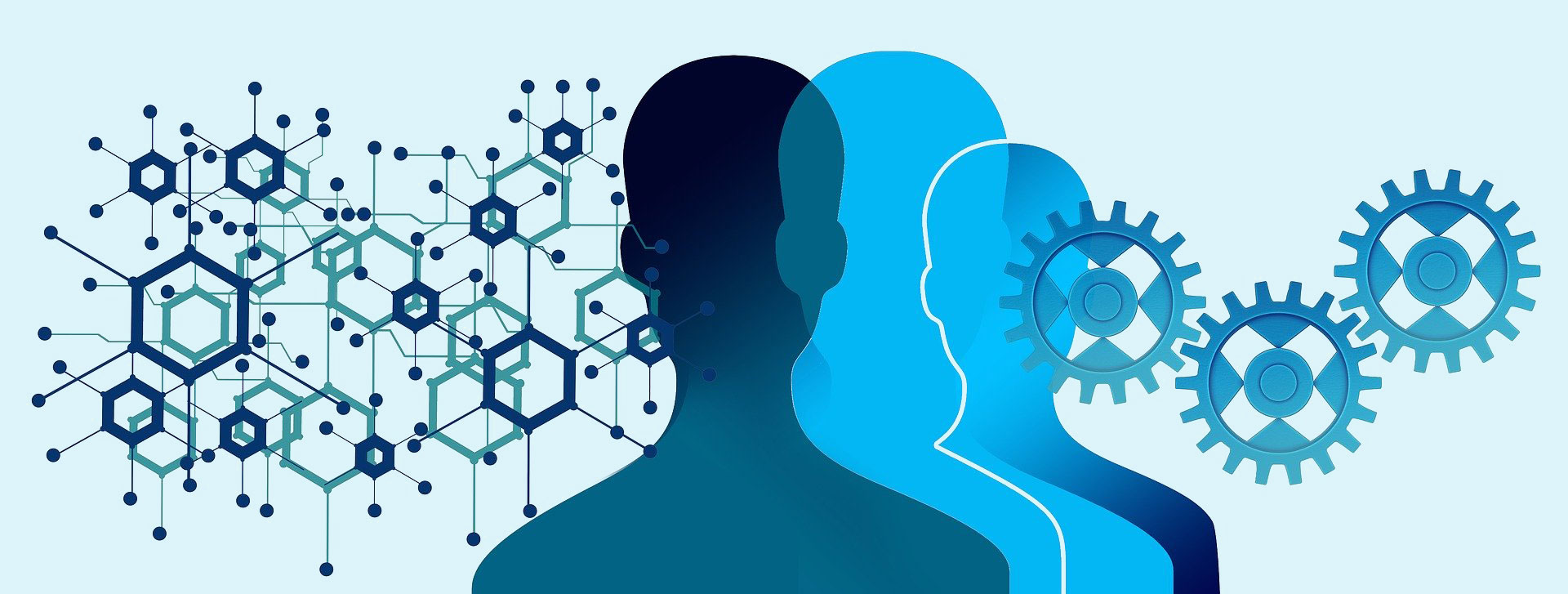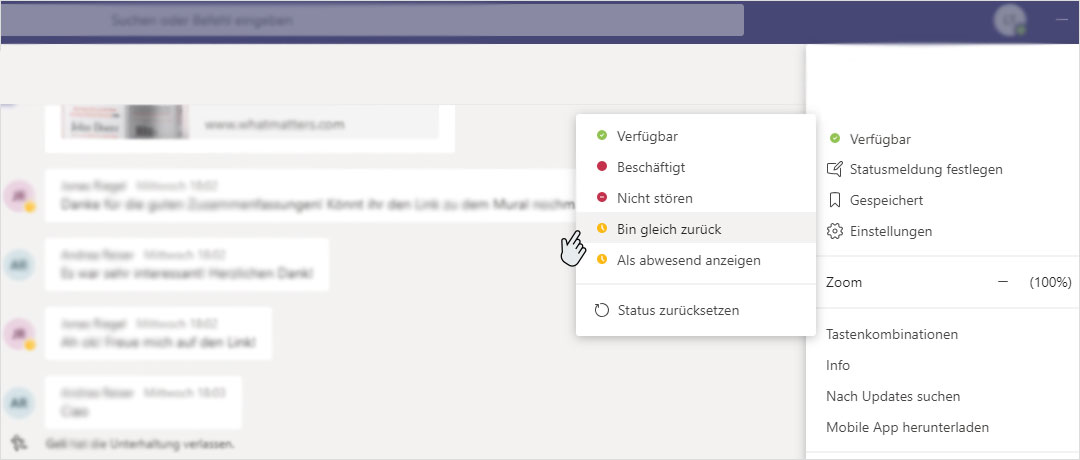06 Jul automatica 2022: Many interesting conversations around Digital Twin, Data Science and Software Engineering
Posted at 13:03h
in Insights-En
[vc_row css_animation="" row_type="row" use_row_as_full_screen_section="no" type="full_width" angled_section="no" text_align="left" background_image_as_pattern="without_pattern"][vc_column][vc_column_text]Many of us have known automatica for years, but for XITASO it was the first time as an exhibitor. With a lot of commitment, joy and team spirit, we intensively prepared our 65-square-meter booth in Hall A4 and now look back on four trade show days full of interesting conversations with new and familiar contacts, a lot of interest in digitalization in mechanical engineering and software solutions for the path to the Smart Factory. After the last two years, we were exceptionally happy to talk to our customers and prospects in person again. Even though we love the digital, nothing beats personal contact.


